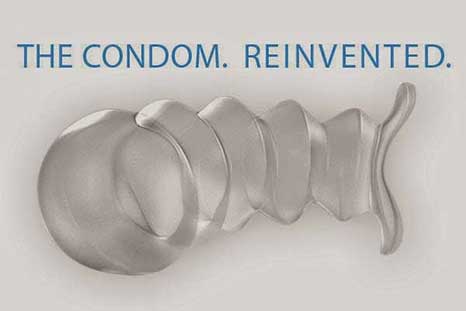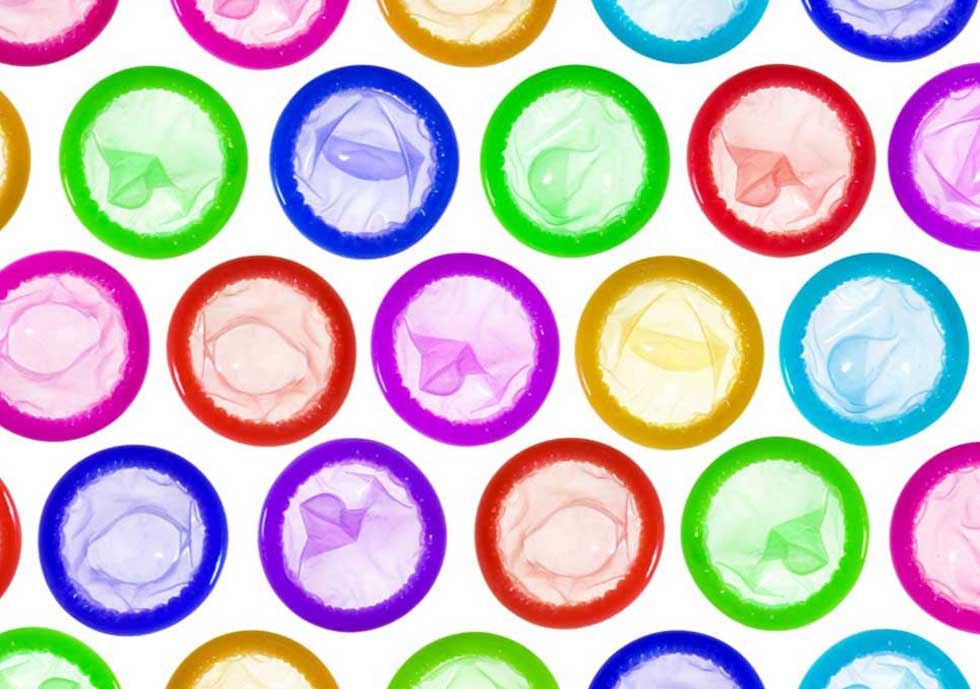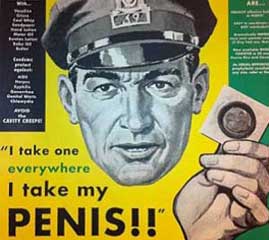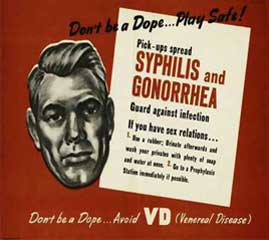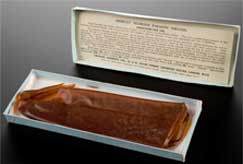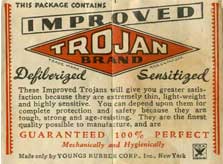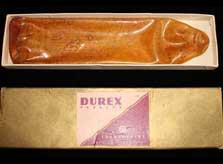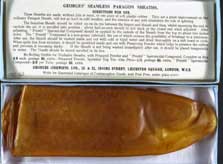» What do you know about condoms - mini quiz » 10 things about condoms » STI Myths » STI dating poster (PDF 1Mb) » Download all files (ZIP 2.75Mb)
10 things you never knew about condoms!
1. They’re Ancient
Many people are under the false impression that the history of the condom only stretches back a hundred years. However, it goes further back than that. There is debate amongst the historians as to all these facts but the simple little condom has had a very colourful history.
CONDOMS THROUGH THE AGES:
15,000 BC: The oldest known depiction of a condom is in a painting on the walls of the Grotte des Combarrelles, a cave in France. The paintings are believed to be between 10,000 and 15,000 years old.
150 AD: Condoms appear in the legend of Minos, written down by Antoninus Liberalis. According to historians, this suggests that condom use was widespread during the antiquity era.
1494: An outbreak of syphilis decimated the population of Europe, before spreading to Asia where the disease devastated the Chinese people in 1505. Outbreaks such as this were in part due to the rise of modern religions such as Christianity and Islam, which forbade the use of birth control.
1564: Italian doctor Gabriele Falloppio publishes De Morbo Gallico (The French Disease), which was the first medical research to suggest the use of condoms as a means of tackling syphilis.

This preserved sheepskin condom dates from the Tudor period
1666: The English Birth Rate Commission ascribes falling birth rates to the use of 'condoms' - the first recorded use of the word.
1640: Condoms made from animal intestines have been discovered, which date from the English Civil War. The prophylactics,’ discovered in a toilet, were believed to have been used by the troops of King Charles I - mainly with each other.’
1708: By the 18th century, condom use had become widespread, although they weren't to everyone's taste. John Campbell, 2nd Duke of Argyll, unsuccessfully tried to have them banned in 1708, while in 1717, Daniel Turner, an English doctor, published a text condemning condom use.
1840: Although uncomfortably thick, condoms had become affordable for all and were widely promoted to the working classes - all thanks to the discovery of rubber.
1870: The first major condom manufacturer, E. Lambert and Son of Dalston, opened its doors in London.
1912: German entrepreneur, Julius Fromm, invented a new and speedy way of making condoms called 'cement dipping', which involved adding petrol to rubber to make it liquid before dripping it over a glass mould. Fromm was also the first to make branded condoms.
1914: The German military were the first to promote condom use among troops. By the time World War One broke out in 1914, all countries, except the UK and the USA, handed out condoms to their soldiers. As a result, by the end of the war, the US army had been forced to deal with nearly 400,000 cases of STDs.
1920: Latex was invented, revolutionising the condom in the process. Youngs Rubber Company was the first to manufacture a latex condom, which was sold under the Trojan brand.
1932: The London Rubber Company became the first European company to make latex condoms, which they sold under the trade name, Durex.
1941: Germany outlawed civilian use of condoms and directed the country's entire supply to the military. All combatant nations in World War Two provided their soldiers with vast quantities of prophylactics. The military also created an aggressive advertising campaign promoting safe sex through prevention, combining images of sexy women with the not-so-sexy effects of VD.
1955: Post war, condom use became widespread, with 60 per cent of married British couples and 42 per cent of American pairings regularly using them.
1967: France repeals its birth control laws, followed by Italy in 1971. The last country to get rid of anti-condom laws was the Republic of Ireland, which did so in 1993.
1981: The AIDS epidemic begins, leading to widespread public health campaigns in Western countries between 1985 and 1987. As a result, condom use skyrockets, particularly in Switzerland, where condom use shot up by 80 per cent.
1994: Condom sales begin to decline slightly as the fear of AIDS diminishes in the West. Nevertheless, globally condom use continues to grow, with experts predicting that 18.6 billion will be used every year by 2015
2. They used to be hard to get
Once available in the United States by prescription only and a prescription was not easy to get, unless you were a man who happened to enjoy the company of prostitutes. Some doctors, averse to giving them to women interested in birth control and STD prevention, would happily dish them out to husbands for their extra-curricular activities. Condoms first became available via a vending machine in 1928. ��

3. They Were Developed to Combat Syphilis as opposed to birth control
�In 1494 an outbreak of syphilis decimated the population of Europe, before spreading to Asia where the disease devastated the Chinese people in 1505. In 16th century Italy, a man named Gabriele Falloppio (of Fallopian tubes fame) wrote a paper on syphilis. Falloppio performed the first reported test using linen sheaths. These were soaked in a chemical solution, dried and used to cover the glans of the penis, while being held on ever so quaintly with a ribbon. A test involving 1100 participants showed that the men using these linen sheaths did not contract syphilis.
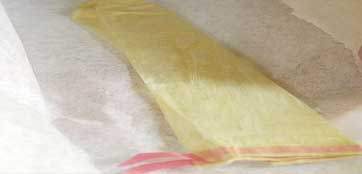
Linen Sheaths
Gabriele Falloppio (1523-1562)
Italian surgeon and anatomist
4. The Materials Have Evolved
Condoms were not always made from latex, but from a variety of materials such as, animal intestines, linen, silk and leather have been used throughout history. Different countries used different materials. In the Roman Empire goat bladders were used, while in Japan leather and tortoiseshell were used. Linen was used in Ancient Egypt as early as 150 AD. Casanova, the notorious womanizer of the 19th century, was also said to have used linen condoms, and referred to them as “English riding coats.” The latex we all know today was invented in 1920. The London Rubber Company, now known as Durex, was the first European nation to sell latex condoms in 1932.
5. They Were Reusable
In the 1700s, condoms made from animal intestines and were first made available to the general public. They were expensive and could cost several months pay and as a result were often re-used.
The invention of rubber vulcanization by Charles Goodyear and Thomas Hancock in 1844 revolutionized the industry, making it possible to mass-produce condoms cheaply and quickly. But these weren’t available worldwide — the rubber would perish on the long journey by sea to isolated places. Thicker, reusable condoms therefore remained commonplace in New Zealand in the 1950s. And in Japan during World War Two, many of the women who worked in the brothels noted that the most degrading job was “cleaning the condoms at the end of the day.”
Credits: Science Museum, London 'Paragon' reusable rubber condom, London, England, 1948-1950 � ��
6. Condoms Replaced Weasel Testicles
While the condom it’s now a tried and tested form of birth control, condoms did not boom until the 20th century. Before that there are accounts of varied and far more fascinating birth control methods. In Europe during the Middle Ages, women were advised to wear weasel testicles on their thighs or hang an amputated foot from their necks. It was also believed in some quarters that should a woman wish to avoid pregnancy she need only walk three times around the spot where a pregnant wolf had urinated.
A more dangerous method comes from centuries old China, where women would be encouraged to drink mercury or lead. Technically, that was effective, as those who partook generally either died or became sterile. ��

7. Celebrities Endorse Them
In 2012 One Direction turned down the opportunity to appear on a range of condoms. Their management team was so against the idea that they’re considering a lawsuit against an American brand which released a One Erection range. The boy band JLS released a condom range with Durex in 2010. It was announced that every penny made would go back into the JLS Charitable Foundation. Other celebrities to get involved have included Daft Punk, Kesha and Madonna. There were even commemorative royal wedding condoms and they were imaginatively titled’ Crown Jewels’, though they were a novelty item only. �
8. They Have Surprising Secondary Uses
The average modern condom can hold an astonishing one gallon of liquid, and with their reputation for surprising strength, has seen them used for other purposes. There are reports of soldiers using them to protect their rifles from water damage.
After the Indian government began distributing free condoms to combat HIV and a rapidly increasing population, many of the recipients found purposes for them that the government had not quite intended. Health workers state that road building contractors acquired a large amount in order to mix them with concrete and tar, thereby creating crack resistant and smoother road surfaces. Builders spread beds of condoms along the base of cement plastering to prevent water seepage, while weavers would use them to lubricate and polish their looms. And in the countryside, villagers would use the condoms as disposable water containers to help them wash up after a bathroom break in the field.

9. New Advances Have Been Made
Avoidance of pregnancy and reducing sexually transmitted infections were long the priority of condom development. With those now covered, companies have been able to move on to attempting to remove the stigma of equating condoms with less enjoyable sex.
The 1990s witnessed flavoured options appearing and variations and combinations of lubricated, ribbed, studded, thinner and even glow-in-the-dark condoms emerged as well. An increase in the enjoyment for both partners was the driving motivation behind these creations. Progress continues today — Origami Condoms is currently developing the Receptive Anal Intercourse condom, which they call “radical new condoms for the 21st Century.”
��
10. The Future
From animal intestines to rubber, the condom has been on quite a journey in its history, and the next big step could be just around the corner. Scientists have been working on an “invisible” condom, a gel that hardens when subjected to increased temperatures. ��
